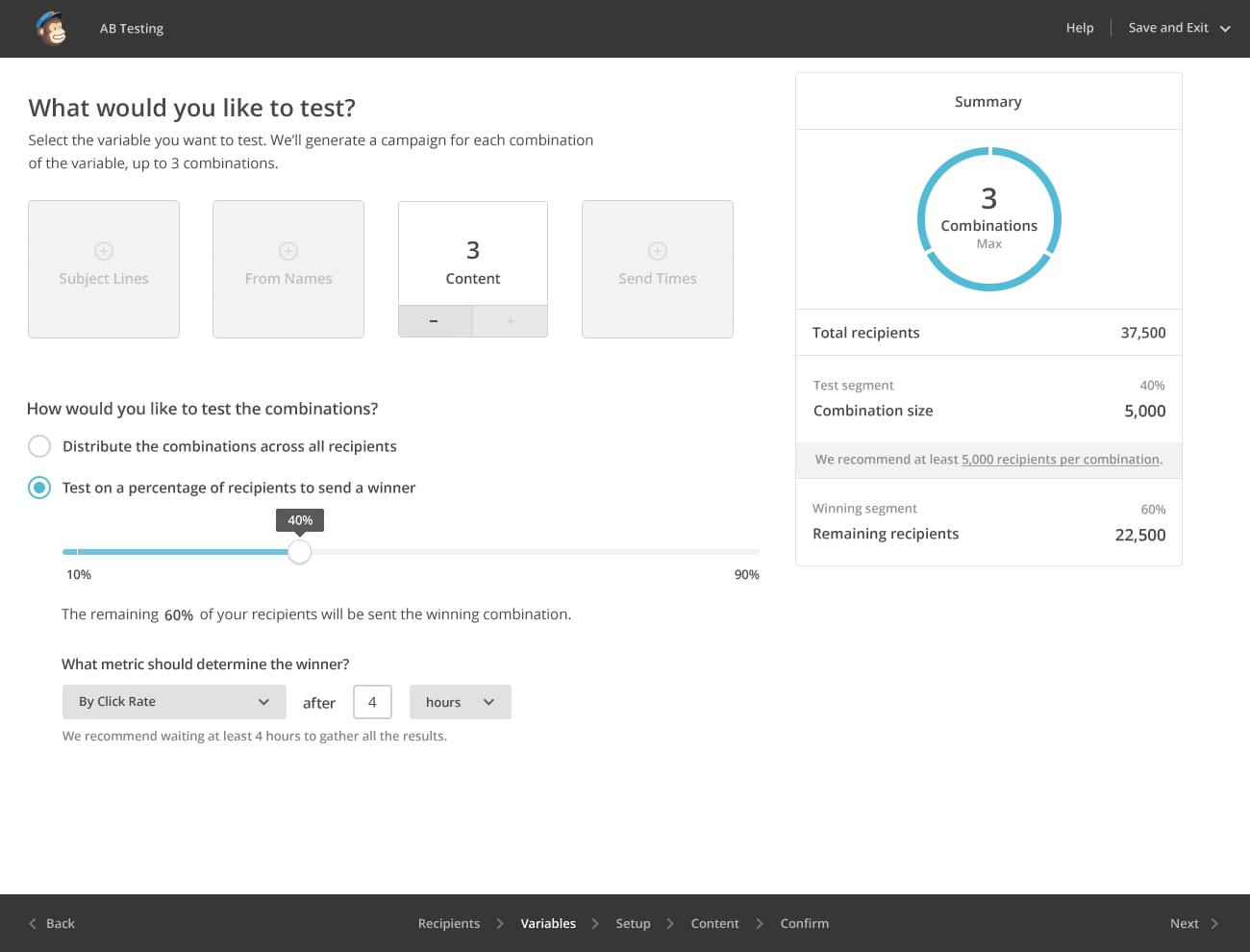One of the most important tools for a marketer is their email marketing platform. Email marketing helps engage and nurture the leads you’ve spent so much energy capturing. An email is often the link in the sales chain that turns a lead into a conversion or a customer into a repeat customer.
As you search for your email marketing solution, comparing Campaign Monitor vs. MailChimp will give you a sense of what two of the best email marketing solutions can do for business.
Your basic email marketing platforms will provide these (and other) features:
- Subscriber lists
- Email design template or builder
- Reports of clicks, opens, bounces
When comparing Campaign Monitor vs. MailChimp, keep your company’s needs in mind. Do you already have an analytics tool that includes your email marketing campaigns? Do your email marketing goals rely heavily on customization or website integrations, or would a stand-alone option work? How much design skill do you have and how important is that design to your overall brand? Keep your version of these goals nearby as you read.
Campaign Monitor: Features and Capabilities

Marketers with little to no design or technical expertise find Campaign Monitor a good fit for basic email lists and campaigns. An intuitive interface helps you easily build each email, and Campaign Monitor provides a few templates if you’re feeling short on time or creativity. Video uploads are simple.
If you’d like to customize your email more than what’s provided in the template, the platform supports HTML coding and even text-only emails, although reports don’t include statistics for non-HTML campaigns. A handy Inbox Preview tool lets you view your email in different email clients before you send it to make sure your design translates for all readers.
In addition to design customization, you can personalize emails and segment lists using subscriber-specific data that you or your customers provide. Segmented lists help you make your campaigns more effective and increase open and click rates. The platform released auto-response emails for a couple of basic triggers in 2016. Although the standard choices are limited, you can expand the auto-response options by enabling filters and segments on your subscriber lists.
Campaign Monitor offers reporting and analysis for all campaigns. Reports provide location and interaction data for customers, and you can integrate Google Analytics to send clicks and conversion data for landing pages directly to your GA dashboard. Reports show comparison metrics for lists and segments to boost your open rates. The visual overlay report analyzes user engagement for every section of your email.
The Campaign Monitor learning center focuses on starting campaigns, but they also have a lot of resources for continued learning. This somewhat makes up for Campaign Monitor’s lack of design templates and need for HTML coding for complicated designs. Support comes in the form of forums, FAQs and email support. There’s no live support via phone or chat, but users report quick support email responses.
If you want to try out the tools, you’ll need to create a free account, as they don’t offer an official “trial.” The free account provides full access to the whole platform, but will prompt you to upgrade if you want to send a mass email. For all pay levels, the tool restricts your total emails per month to five times the total number of subscribers you pay for, which may limit some larger businesses or organizations with more frequent campaigns.
Outside of basic email marketing tools, Campaign Monitor has some interesting extras for building your email lists: you can build sign-up forms to appear on your site, or use a mobile app to collet email subscriptions at live events.
MailChimp: Features and Capabilities

MailChimp leads the email marketing pack with its robust customization and e-commerce marketing focus. With integrations for most e-commerce platforms and useful reporting and analytics right in the app, MailChimp provides an all-in-one solution for email campaigns.
Build beautiful and customized email campaigns in the visual editor, or code HTML to build your own emails. The platform offers limited templates and does not provide professional design services for purchase, but you can email a design made in another tool to replicate in the system as an alternative.
ALSO READ: 6 Standout MailChimp Alternatives for Email Marketing
MailChimp’s A/B testing far surpasses its competition, with subject line and content testing, and the platform will automatically push your most successful options to your most unresponsive customers to increase overall engagement. Testing works for up to eight variables in paid plans. MailChimp also helps you run time-sensitive campaigns by analyzing peak open times and automatically adjusting according to the customer’s time zone.
E-commerce users will appreciate the email batching system, which automatically divides your campaign into smaller segments so responses don’t overload your servers or site. When you integrate your e-commerce and social platforms, on-site data helps the platform further customize emails. MailChimp will pick email elements based on the customer’s on-site actions and social profiles including purchase data, cart abandonments, and social media behavior. The platform automatically scans your lists for influencers and segmentation data that can further individualize your campaigns.
MailChimp also excels in its analytics and reporting, from macro to granular. Bounce rates include trend analysis and removal suggestions. Industry benchmarking shows you how your campaign stacks up against your competitors, while subscriber-specific analytics give you suggestions for list modification. Native integrations with third-party systems provide ROI and purchase metrics right in MailChimp, and you can build printable and sharable reports for stakeholders.
MailChimp’s automation combined with its data analysis both inside the platform and on integrated app data pushes the platform ahead of many competitors, but that same data analysis can cause its own problems. Some users have trouble uploading existing subscriber lists to a new account, although sign-ups through MailChimp forms work just fine. In some cases, their highly selective spam filter (CAPTCHA form, valid web address, email list restrictions) can interfere with campaigns. Then again, many users will appreciate these cautions.
Making Your Final Decision
No email marketing solution will have everything, but when you compare Campaign Monitor vs. MailChimp side by side, MailChimp seems to offer more in the way of customization and analytics. Marketers who already use campaign analytics and segment their customer lists in another platform, on the other hand, will find Campaign Monitor a solid choice with a pleasant user experience.
Of course, these two aren’t the only options for email marketing software. To browse other solutions or get a custom recommendation, visit our Product Selection Tool.



